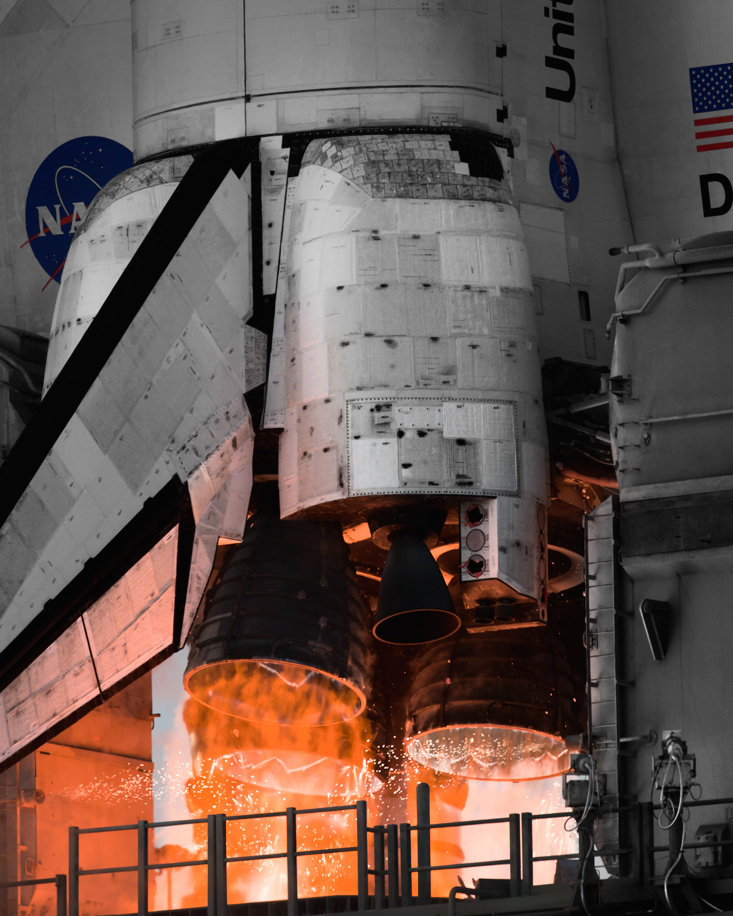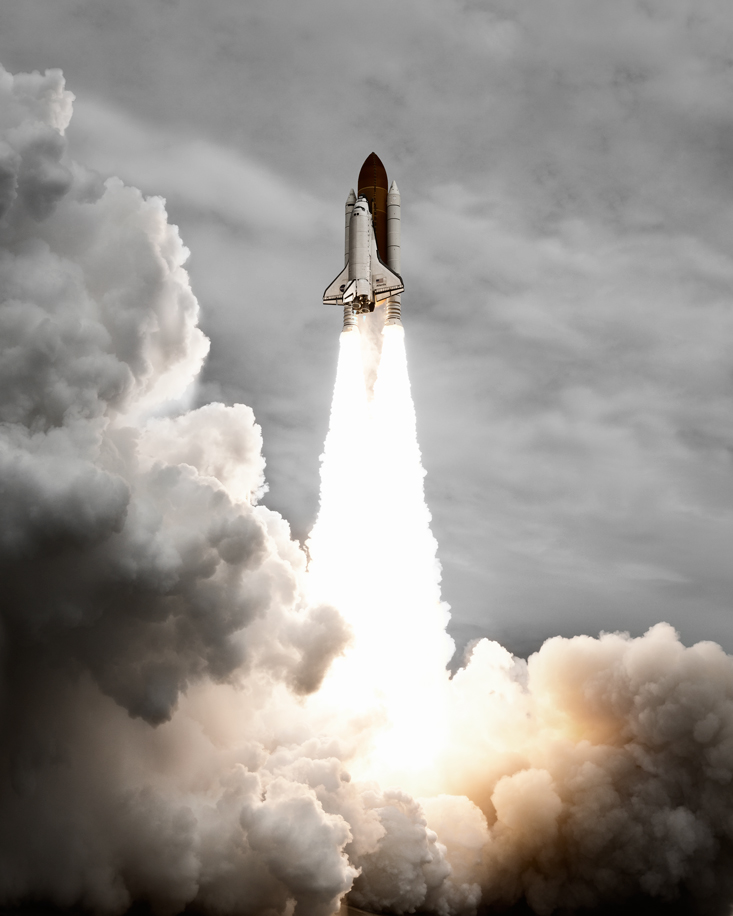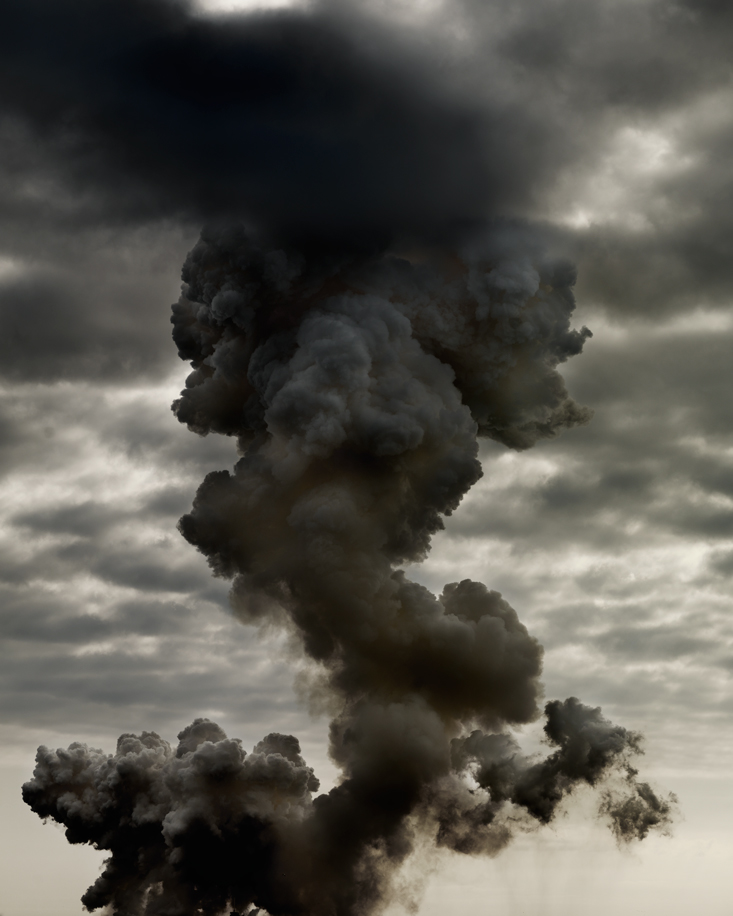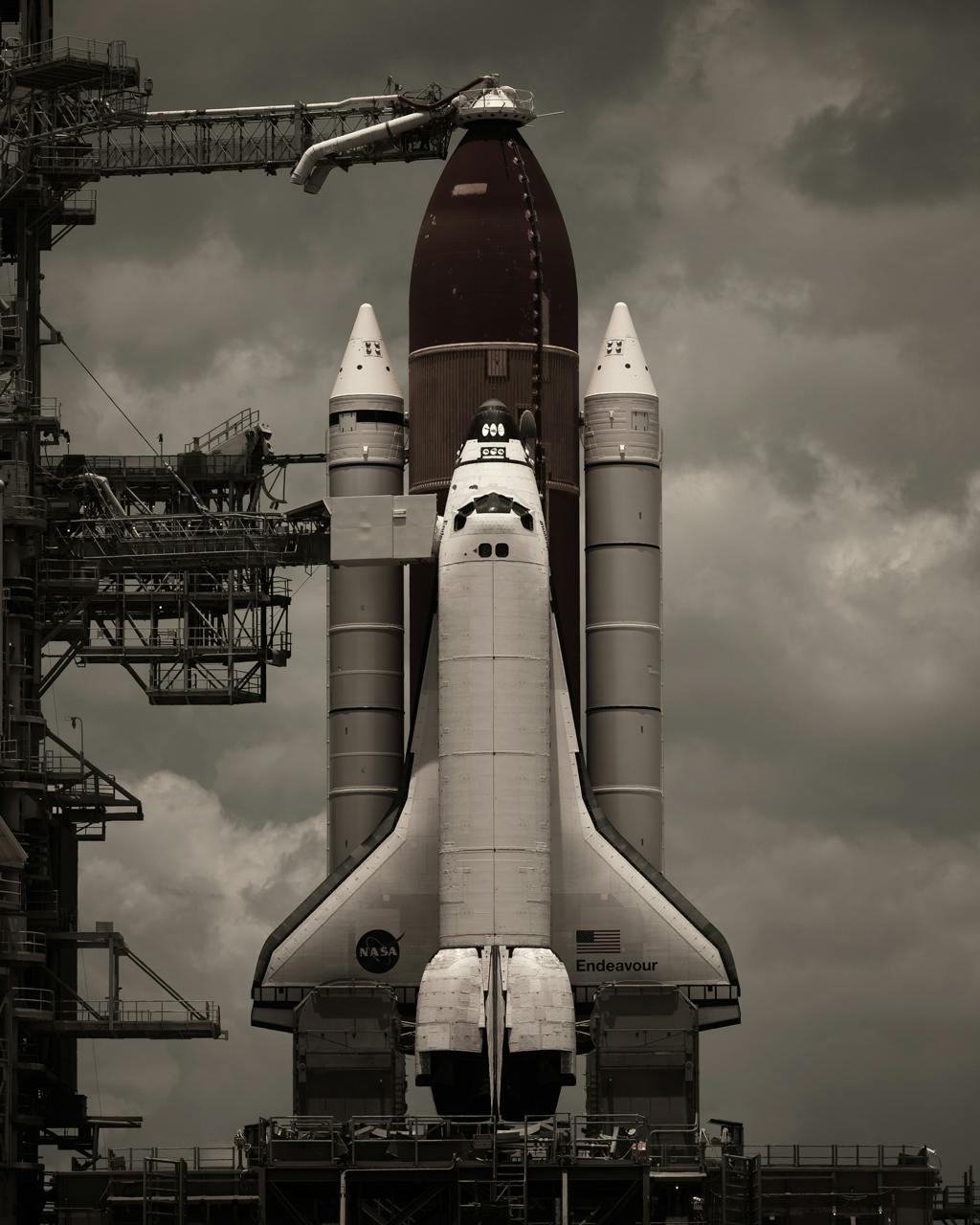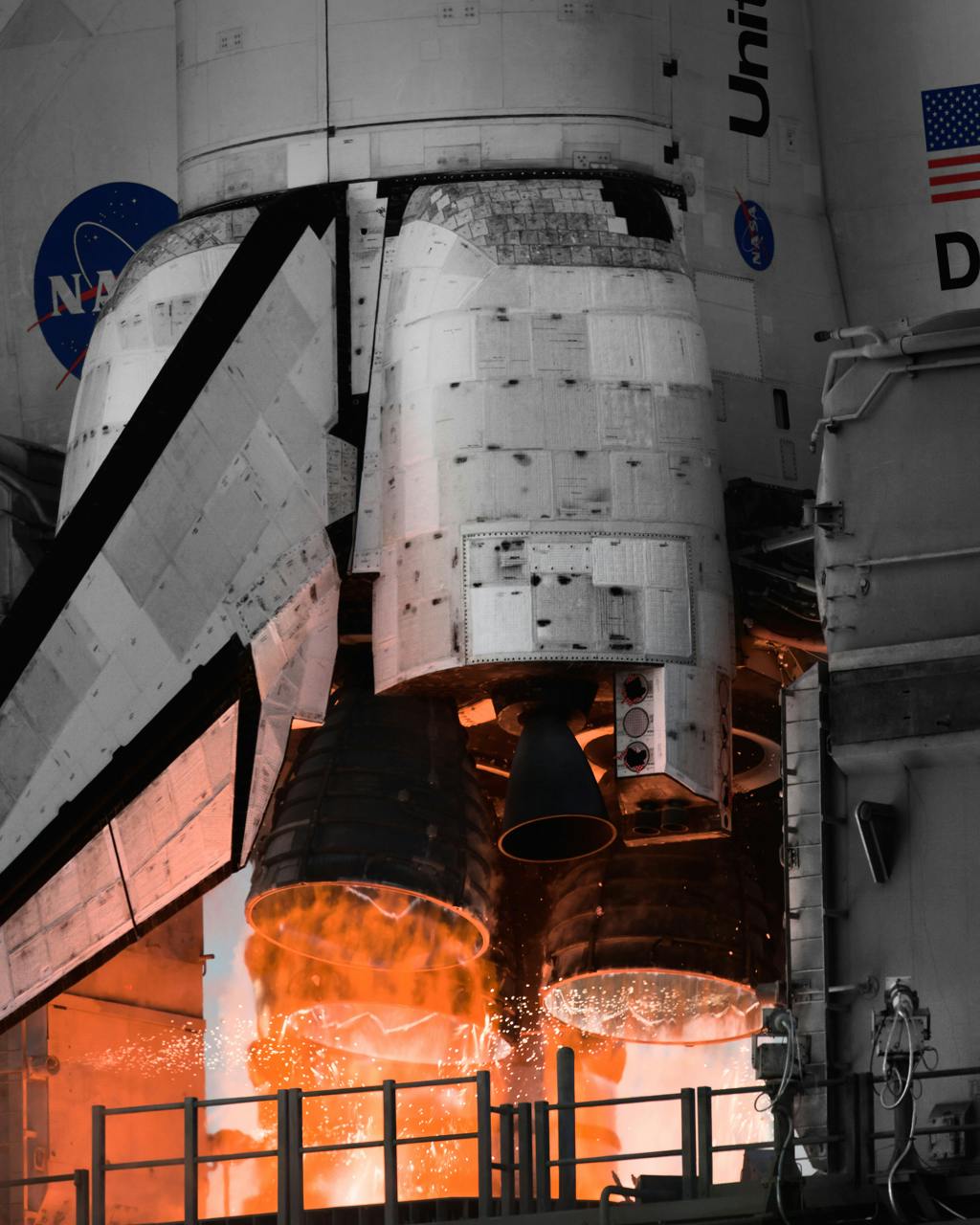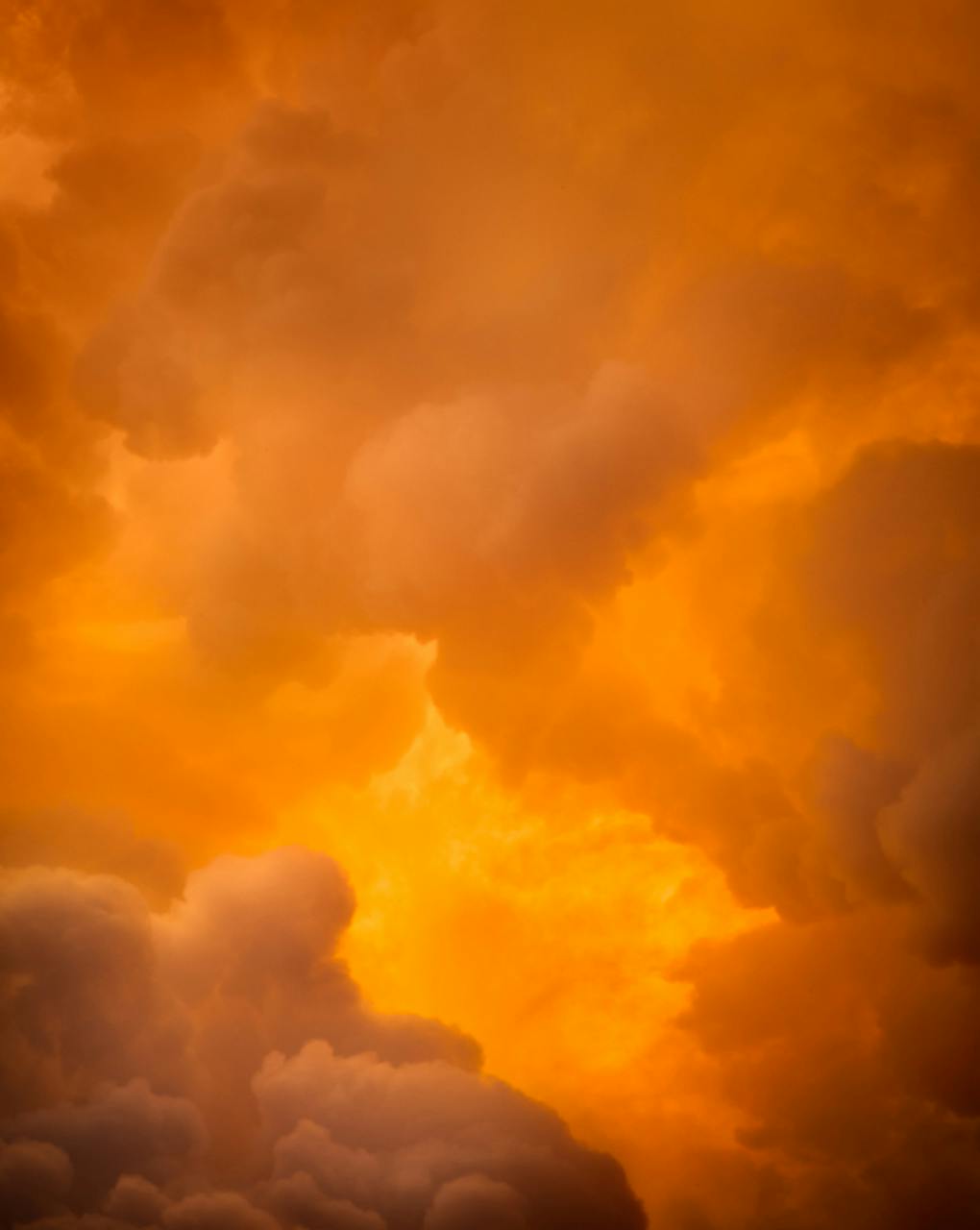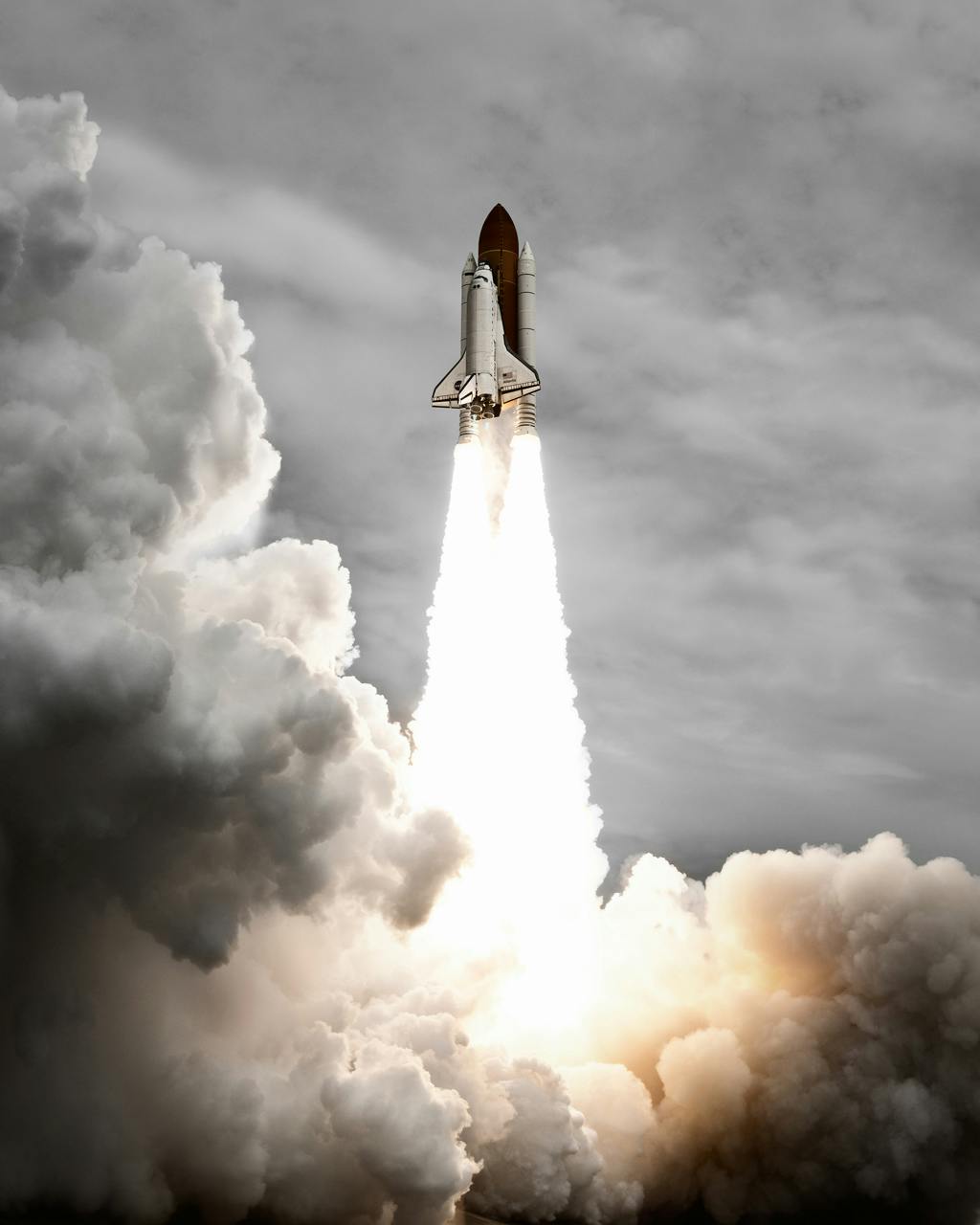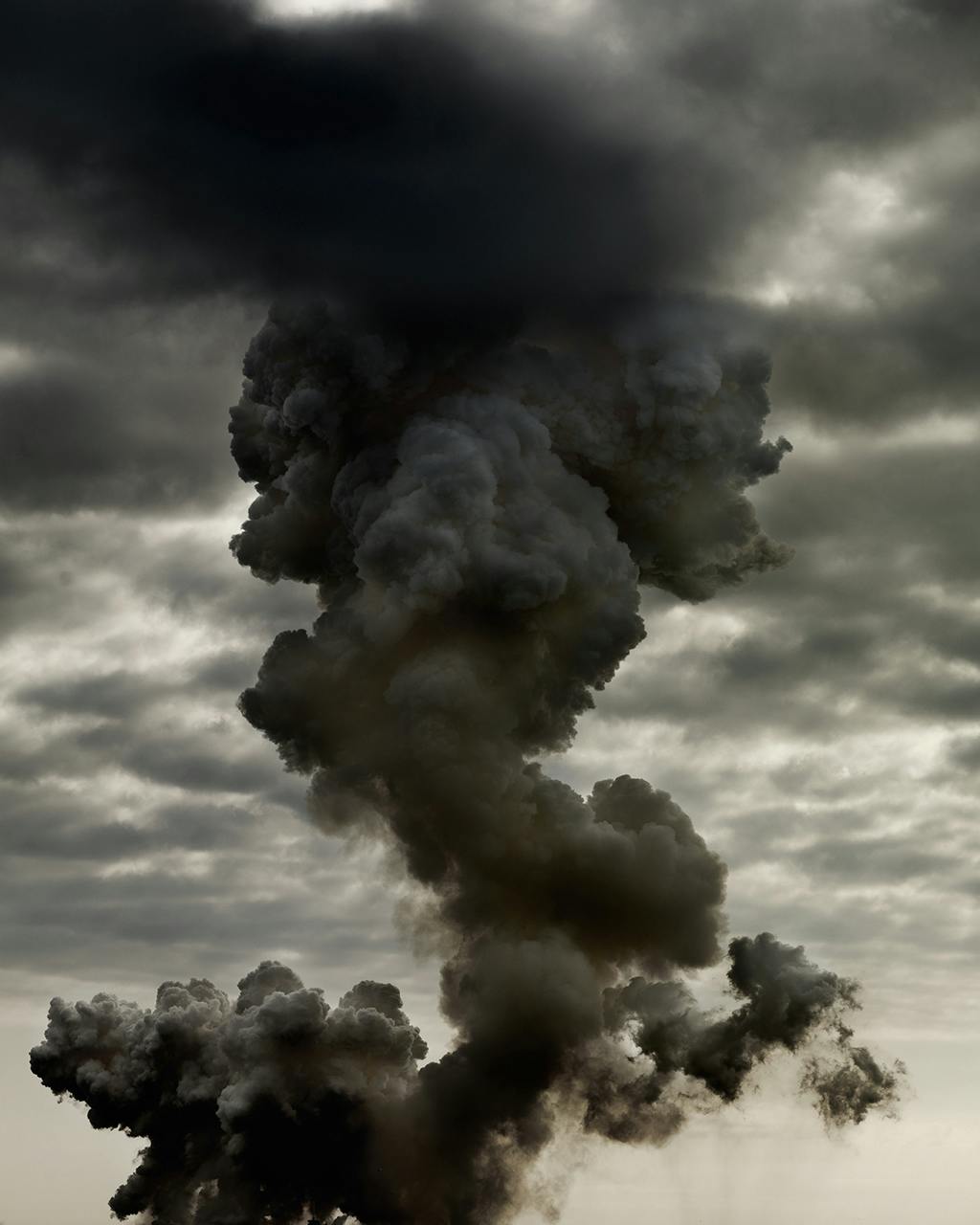The infrastructure behind NASA’s shuttle program was unimaginably vast. At $1 billion each, the launches were so audacious that they seemed to risk collapsing under the weight of their own hubris. And yet, for 30 years the orbiters came and went, acting as a protective vessel, enabling a select group to contemplate the fury of the world in a stillness unobtainable by the rest of us.
Then in early 2011, the space shuttle program came to an end. As a journalist, I felt compelled to document this era in space exploration while it was still around.
No human could survive this violent event at such close proximity.
That same year, NASA allowed me unprecedented access to the area around the launch pad. I set an average of 11 cameras, some as close in as 650 feet from the shuttle’s main engines. The cameras were mounted on heavy-duty tripods weighted with 100-pound sandbags and fitted with custom sound-activated triggers.
As the engines came to life, the intense sound they generated activated the cameras, which then began documenting the spectacle at four frames per second. No human could survive this violent event at such close proximity.
It was a rare opportunity. But, even after a 30-year career as a photojournalist, I made a couple of rookie mistakes. In photographing Discovery’s final mission I neglected to put a memory card into one of my cameras. On Endeavour’s final launch, I placed two cameras too close to the main engines, and they got smoked out after only a couple of frames.
At first I was heartbroken. But when I sat with the flawed images, the ominous cloud of smoke that enveloped the shuttle grew more beautiful to me and I now count them among my favorites.
